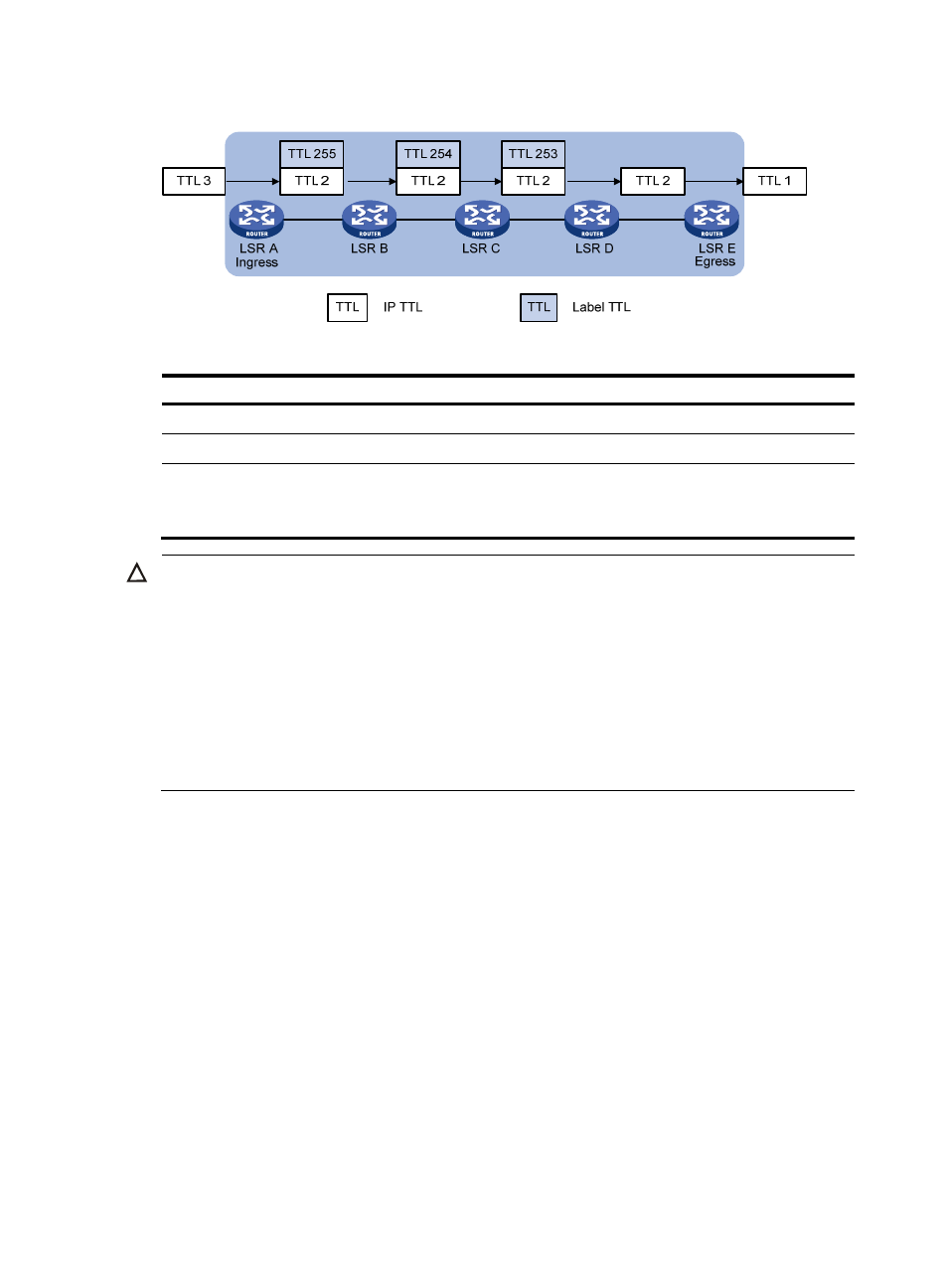Packets – H3C Technologies H3C S10500 Series Switches User Manual
Page 78

67
Figure 22 Label TTL processing when IP TTL propagation is disabled
Follow these steps to configure IP TTL propagation of MPLS:
To do…
Use the command…
Remarks
Enter system view
system-view
—
Enter MPLS view
mpls
—
Enable MPLS IP TTL propagation
ttl propagate { public | vpn }
Optional
Enabled for only public network
packets by default
CAUTION:
•
Within an MPLS domain, TTL is always copied between multiple levels of labels. The ttl propagate
command affects only the propagation of the IP TTL to the TTL of an MPLS label. Therefore, this
command takes effect only when it is configured on the ingress.
•
For locally generated packets, an LSR always copies the IP TTL value of the packet, regardless of whether
IP TTL propagation is enabled or not. This ensures that the local administrator can tracert for network
diagnoses.
•
If you enable MPLS IP TTL propagation for VPN packets on one LSR, you must also enable it on all
related provider edge (PE) devices, so you can get the same result when you traceroute from those PEs.
For more information about PE, see the chapter “MPLS L3VPN configuration.”
Sending back ICMP TTL exceeded messages for MPLS TTL
expired packets
After you enable an LSR to send back ICMP TTL exceeded messages for MPLS TTL expired packets, when
the LSR receives an MPLS packet that carries a label with TTL being 1, it will generate an ICMP TTL
exceeded message, and send the message to the packet sender in one of the following ways:
•
If the LSR has a route to the packet sender, it sends the ICMP TTL exceeded message to the packet
sender directly through the IP route.
•
If the LSR has no route to the packet sender, it forwards the ICMP TTL exceeded message along the
LSP to the egress, which will send the message to the packet sender.
Usually, for an MPLS packet carrying only one level of label, the first method is used; for an MPLS packet
carrying a multi-level label stack, the second method is used. However, because autonomous system
boundary routers (ASBRs), superstratum PEs or service provider-end PEs (SPEs) in Hierarchy of VPN
(HoVPN) applications, and carrier backbone PEs in nested VPNs may receive MPLS VPN packets that
carry only one level of labels but these devices have no IP routes to the packet senders, the first method
